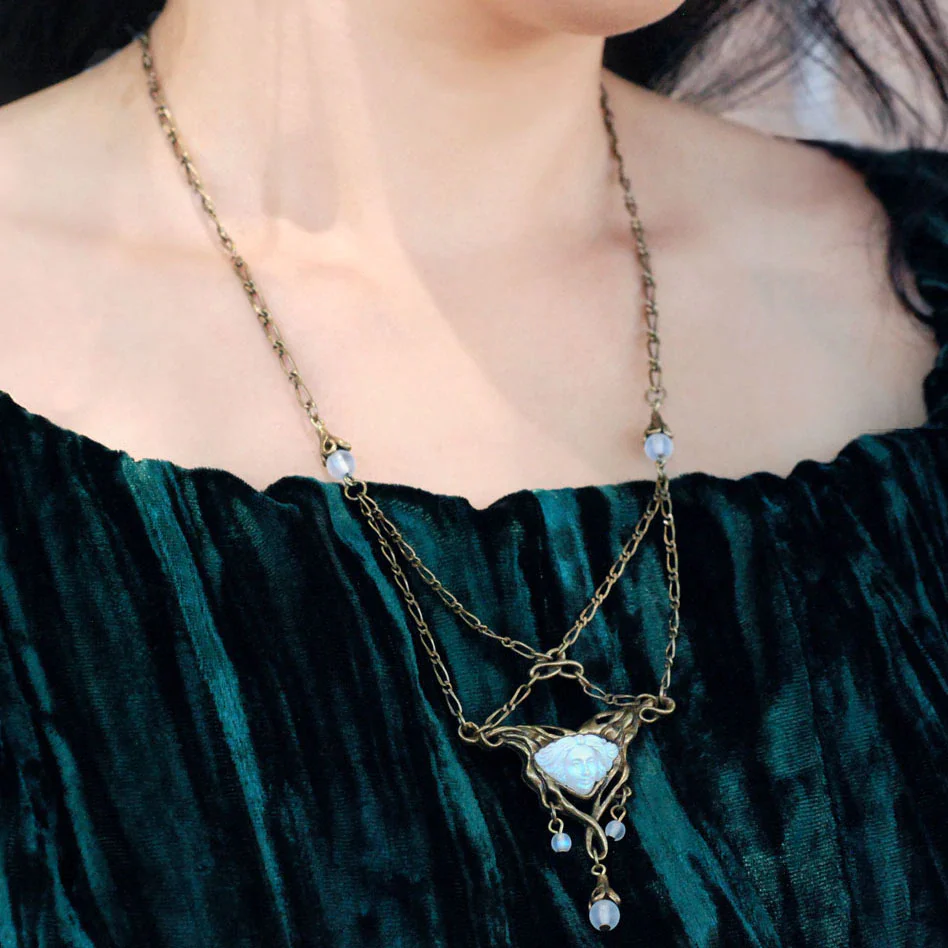The Fascinating World of Art Nouveau Jewelry
Kewword: Art Nouveau, Art Nouveau jewelry
Art Nouveau, a movement that swept across Europe and beyond in the late 19th and early 20th centuries, was a radical departure from the prevailing aesthetic of the time. This revolutionary style, characterized by flowing lines, organic motifs, and a focus on craftsmanship, found its exquisite expression in jewelry.
A Revolution in Design:
Art Nouveau jewelry broke free from the rigid, often overly ornate styles of the Victorian era. Inspired by nature, artists embraced flowing curves, asymmetrical designs, and motifs drawn from the natural world – flowers, leaves, insects, and even mythical creatures.
Key Characteristics:
- Organic Forms: Think flowing vines, delicate blossoms, and sinuous serpents. Nature was the ultimate muse, inspiring intricate and imaginative designs.
- Unconventional Materials: Art Nouveau jewelers experimented with a wide range of materials, including precious metals like gold and silver, gemstones, enamel, horn, ivory, and even glass.
- Craftsmanship: Emphasis was placed on meticulous craftsmanship. Each piece was often handmade, showcasing the artist's skill and attention to detail.
- Symbolism: Art Nouveau jewelry often carried symbolic meanings. For example, a dragonfly might represent fleeting beauty, while a serpent could symbolize temptation or rebirth.
Notable Figures:
- René Lalique: A true master of his craft, Lalique pushed the boundaries of jewelry design, incorporating innovative materials like glass and horn.
- Georges Fouquet: Known for his elegant and sensual designs, Fouquet often depicted female figures and celebrated the beauty of the human form.
- Louis Comfort Tiffany: While primarily known for his stained glass, Tiffany also created stunning Art Nouveau jewelry, often incorporating his signature Favrile glass.

Collecting Art Nouveau Jewelry:
Collecting Art Nouveau jewelry can be a rewarding experience. However, it's important to exercise caution and do your research:
- Authenticity: The Art Nouveau period was relatively short-lived, making authentic pieces highly sought after. Be wary of fakes and reproductions.
- Condition: Examine pieces carefully for signs of wear and tear, repairs, or damage.
- Provenance: If possible, try to determine the history of a piece. Knowing its provenance can significantly increase its value.
- Appraisal: Consider having a professional appraiser examine any potential purchases to ensure authenticity and determine fair market value.
The Legacy of Art Nouveau:
Though its reign was relatively brief, the Art Nouveau movement left an indelible mark on the world of jewelry. Its influence can still be seen in contemporary designs, reminding us of the enduring power of creativity, craftsmanship, and the enduring beauty of nature.